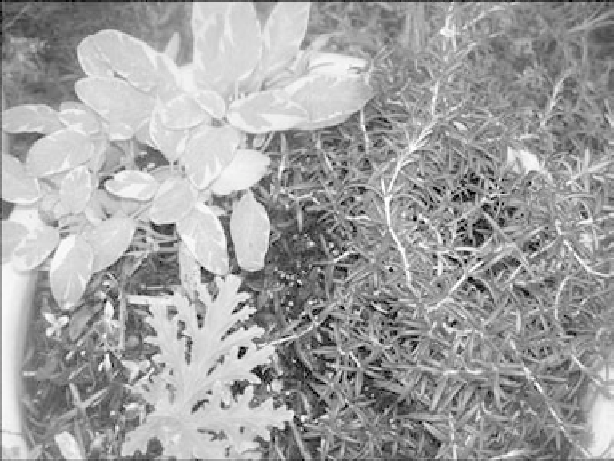Agriculture Reference
In-Depth Information
Sage and rosemary planted together in a large ceramic container. Geranium is also planted but it won't
survive the winter. Next year when the perennial plants are larger, they will have more room in the container.
Sage is great in many chicken dishes, stuffing, or vinegars. Sage should be dried thoroughly before
storing but be aware that dried sage has a stronger flavor than fresh leaves. If the plant becomes too
woody and the center begins dying off, you can prune it more heavily to encourage new growth.
Or you can root cuttings or
layer
the plant to create new sage plants.
deFinitiOn
To
layer
a plant is to pull down a growing stem and bury part of the stem under the ground. The middle of
the stem is under the soil with one end still attached to the main plant, and the other growing tip above
the ground. After a few weeks the stem will develop a root system of its own and can be cut off the main
plant. Replant the cutting and enjoy a brand-new plant identical to the original.
Thyme (
Thymus
spp.
)
Thyme is another of my personal favorites. The scent is delightful, and the plant is so easy to grow
in bed, border, or container. I use thyme as a ground cover for container shrubs and have a nice
amount produced each year as a result. Because the plant is semi-evergreen, the thyme is a great foil
for other flowering plants and herbs.
Start thyme by plugging in plant starts or divisions in the spring or fall. You can also seed the
plants directly outdoors in early spring or start seeds indoors and then transplant them after the last
chance of frost. Thyme is hardy in zones 4 through 8 and is grown as an annual plant elsewhere.















